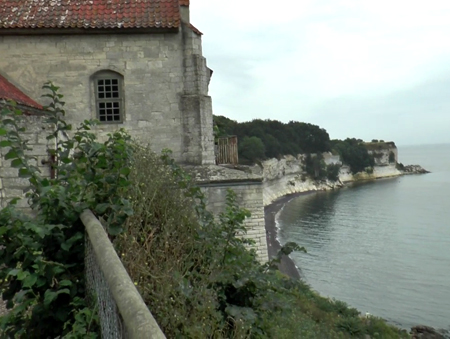
Stevns Klint
- joined the UNESCO World Heritage List in 2014
|
Stevns Klint is situated in the eastern part of Denmark. It is a wonderful site, but it has not really been known among turists.
Then something amazing happened in 2014. Stevns Klint joined the UNESCO World Heritage List. Already that summer the number of turists increased.
Stevns Klint has a special layer of clay that dates back to the time of the extinction of the dinosaurs. It is called "fish clay", and contains some small fish. But most importent is the dust from the meteor, that hit the Yucatán area at the time of the last world wide disaster, the K-T boundary. |
 |
|
|
Stevns Klint has a white cliff with chalk in the bottom, then the rey fish clay and then lime on top.
The man to the right is looking at the fish clay layer. It contains the metal iridium, known from meteors. |
 |
|
|
|
||
|
Iridium has been around the globe. The three best places is Antartica, the Alps og på Stevns Klint. Denmark is in top three.
Here is a map showing the concentration of iridium in the boundary layer - around the globe. The map is on display in Berlin Natural History Museum. |
 |
|
Video clip about the layersChalk in the bottom, then the fish clay and then lime on top.
There is a sharp line between the white chalk in the bottom and the fish clay. The dust from the meteor blast came quickly and disapeared slowly.
Danish speak → |
|

Official video clip
See this video from this fantastic site. It is a part of Unesco world heritage.
Again, these cliffs are the result of sudden disaster, not million of years.
It plays a part in the distinction of the dinosaurs.